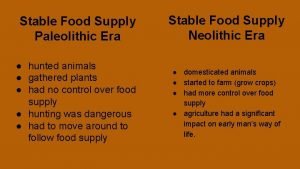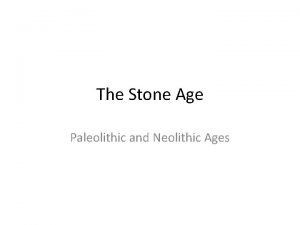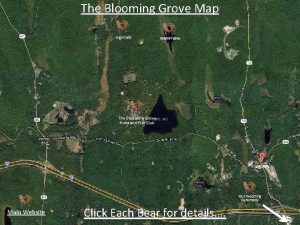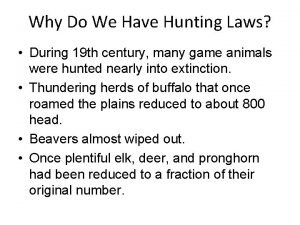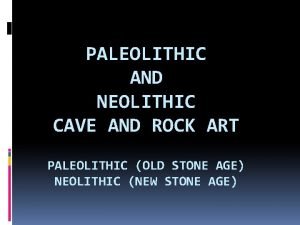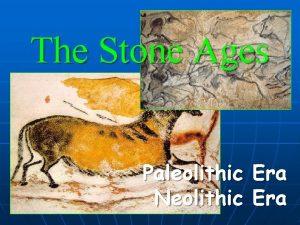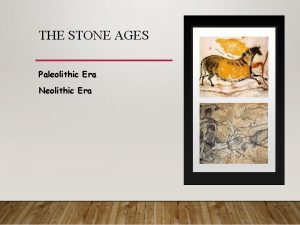Hunting and Gathering to Agriculture Paleolithic to Neolithic









- Slides: 9

Hunting and Gathering to Agriculture —Paleolithic to Neolithic • For thousands of years after the emergence of the human species, human beings lived in tiny communities with no permanent homes.

Paleolithic—Old Stone Age • Early humans formed compact, mobile societies, each consisting of a few dozen people, and they traveled regularly in pursuit of game and edible plants.

Paleolithic Era: Man Adapts to Environment Social: equality between men and women, women as gatherers of nuts, berries, grains, fruits, raise children. Men hunted bison, buffalo, horses. Political: bands of 25 -30, nomadic, families and villages made group decisions about marriage Economic: finding food was way of life, lived in caves, tents with animal hides, no surpluses of food Cultural: evidence that they buried dead, suggests belief in an afterlife, artifacts worshiping fertility goddess, stone tools, spears, bows.

The Neolithic Era and the Transition to Agriculture • When humans brought plants under cultivation and animals under domestication, they dramatically altered the natural world and steered human societies in new directions.

Today the term neolithic era refers to the early stages of agricultural society, from about twelve thousand to six thousand years ago.

The Origins of Agriculture • Many scholars believe that women most likely began the systematic care of plants. Hoping for larger and more reliable supplies of food, women in Neolithic societies probably began nurturing plants instead of just gathering them.

Neolithic Era: Man Controls Environment • Social: less equality between men and women. Women stay at home with children, harvesting food, men hunt. Patriarchy develops. • Political: city administrators, villages develop, then lead to cities • Economic: traded specialized crafts (pottery, baskets), wealth develops, stratification • Cultural: worship fertility goddesses (found artifacts), live in mud huts, cities develop

End of the Neolithic Age • Metal Making • Bronze Age 3000 BC to 1200 BC



